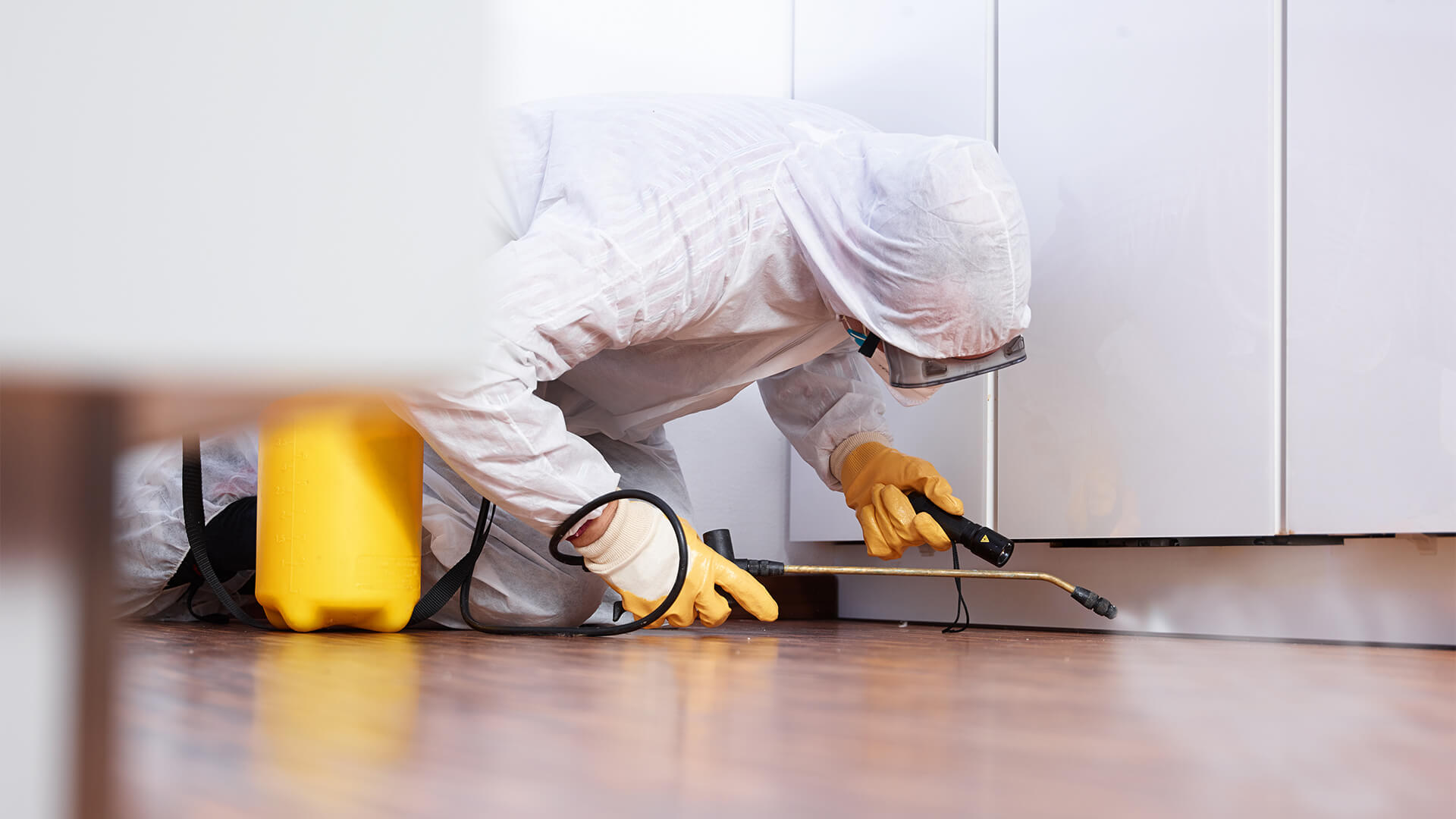Bed Insect Therapy Breakdown: Contrasting Chemical Vs. Non-Chemical Solutions
In the realm of bug control, particularly when dealing with the relentless problem of bed pests, the option in between chemical and non-chemical treatment services can be a crucial one. Both approaches supply distinct advantages and downsides, influencing aspects such as effectiveness, safety and security considerations, and total cost. By analyzing the nuanced details of each approach, a clearer understanding of which course to seek in addressing a bed pest problem can be acquired.
Performance of Chemical Treatments
Chemical treatments for bed insect invasions have actually been extensively recognized for their rapid and powerful efficiency in removing these insects. When thinking about the effectiveness of chemical treatments, it is crucial to recognize that they can provide a quick and detailed option to a bed bug problem. Expert pest control men commonly rely upon insecticides to target bed pests at various phases of their life cycle, including eggs, fairies, and grownups. These chemicals usually work by disrupting the bed pests' nerves, leading to paralysis and ultimate fatality.
Moreover, chemical therapies have the benefit of offering recurring effects, indicating that they can proceed to remove bed insects also after the initial application. This residual action is especially useful in combating any type of prospective re-infestations. Furthermore, the rapid action of chemical treatments can bring relief to people facing serious bed pest problems, permitting them to gain back control of their space rapidly.
Safety Interest In Chemical Solutions
When making use of chemical remedies for bed bug treatment is making sure the security of passengers and the setting,One vital aspect that requires cautious factor to consider. While chemical treatments can be effective in eradicating bed bugs, they may pose risks otherwise handled correctly. One of the primary security interest in chemical remedies is the potential injury they can create to human wellness. Exposure to particular chemicals made use of in bed bug treatments can result in respiratory problems, skin inflammation, or other negative responses, especially in people with pre-existing conditions or sensitivities. In addition, incorrect application or dose of chemical pesticides can lead to poisonous residues lingering in the treated location, presenting long-term wellness threats to passengers.
Moreover, the ecological effect of chemical services is one more considerable consideration. Some chemicals utilized in bed insect treatments might be unsafe to valuable bugs, wildlife, and ecosystems if they leach right into the soil or water supply. It is essential to make use of chemical treatments judiciously, adhering to security standards, and thinking about much less harmful options to mitigate these dangers and make certain the efficient and secure monitoring of bed pest invasions.
Benefits of Non-Chemical Strategies
Thinking about the prospective safety and security issues and environmental impact associated with chemical remedies for bed pest treatment, exploring non-chemical methods provides an encouraging choice with several distinctive benefits. Non-chemical treatments are ecologically pleasant, as they do not add to air or water contamination, making them a sustainable selection for pest control.
Additionally, non-chemical solutions can be effective in targeting bed insects, consisting of hard-to-reach locations where next page chemical treatments might not pass through. Approaches such as warmth treatment, vacuuming, vapor cleansing, and mattress encasements provide extensive eradication without making use of unsafe chemicals. Additionally, non-chemical methods can be less turbulent, needing marginal prep work and permitting for quicker reentry right into treated areas. Overall, selecting non-chemical bed insect therapy techniques not just prioritizes security and environmental management yet also guarantees efficient and extensive pest control.
Limitations of Non-Chemical Treatments

Additionally, non-chemical treatments frequently call for several applications to accomplish successful removal. This can be taxing and might not always assure complete elimination of all bed bugs and their eggs, specifically in hard-to-reach or surprise places.
In addition, the success of non-chemical therapies greatly depends on correct execution and thoroughness, which can be testing for people without expert experience. Poor application of non-chemical techniques may cause incomplete removal, bring about relentless problems and the requirement for additional treatments.
As a result, while non-chemical therapies have their advantages, it is vital to recognize these constraints and consider them when identifying one of the most reliable technique for taking care of bed pest invasions.
Cost Contrast: Chemical Vs. Non-Chemical Options
Offered the restrictions associated with non-chemical therapies, a necessary facet to review in the context of bed pest management is the expense contrast in between chemical and non-chemical alternatives. In contrast, non-chemical therapies more tips here like heat therapy or steam can be more expensive, with costs ranging from $1,000 to $6,000 for a whole home. While the initial price of chemical therapies may seem lower, multiple therapies may be called for to fully remove the invasion, possibly increasing the general cost.
Conclusion

Taking into consideration the possible security worries and ecological effect connected great post to read with chemical services for bed insect treatment, exploring non-chemical techniques provides a promising choice with numerous distinct advantages.Offered the limitations associated with non-chemical therapies, a necessary facet to review in the context of bed bug administration is the expense comparison in between chemical and non-chemical choices. In contrast, non-chemical therapies like warmth therapy or vapor can be extra expensive, with prices ranging from $1,000 to $6,000 for a whole home. While the initial price of chemical treatments may seem lower, several therapies might be required to fully eliminate the problem, potentially enhancing the general expense.In final thought, when comparing chemical and non-chemical bed insect therapy options, it is important to take into consideration effectiveness, safety and security, advantages, limitations, and expense.
Comments on “Relied On A1 Exterminator Charlotte NC - Comprehensive Pest Solutions”